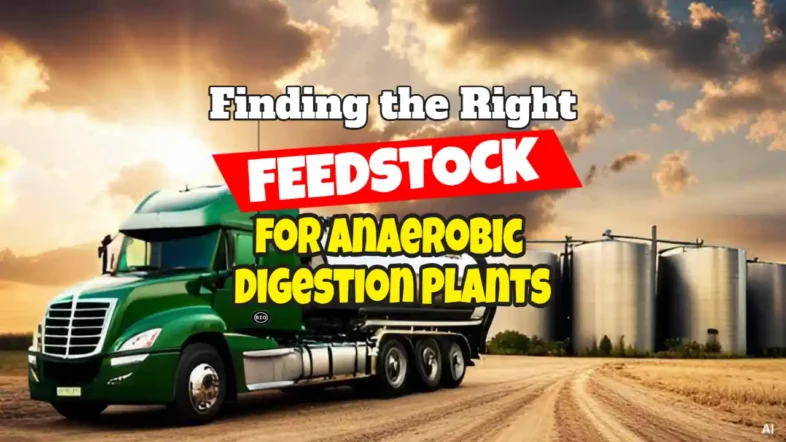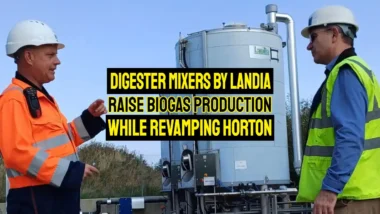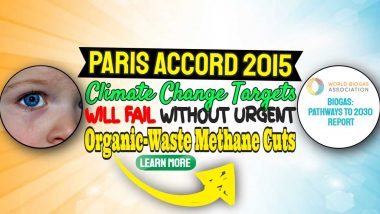The Challenge of Securing Adequate Feedstock for AD Plants to Secure Initial Capital Funding and During Operation
Anaerobic digestion (AD) plants plays a crucial role in the renewable energy landscape, producing biogas through the digestion of organic waste feedstock. However, one of the major challenges in developing and sustaining AD facilities is finding the right feedstock to provide a consistent and ample supply of feedstock throughout all seasons.
In this article, we will delve into the intricacies of this challenge and explore strategies to overcome it, focusing on the importance of finding the right feedstock for these plants.
[boomdevs_toc]
Finding the Right Feedstock Materials Currently Available
Sourcing suitable feedstock for AD plants is a critical aspect of planning and justifying the business case for such ventures. In the United Kingdom, the feedstock mix for AD plants is a dynamic landscape.
Despite the ongoing debate surrounding food versus fuel, energy crops continue to dominate the feedstock mix, providing a reliable source of input for these facilities.
Currently, more than half of the feedstock in the UK is derived from various forms of waste products, including food waste (25%), slurry (8%), crop waste (2%), and other forms of waste (19%). Source: Savills Research
These feedstocks present challenges in terms of supply volatility and uncertain biogas output volumes, but they also offer significant environmental benefits, including reduced emissions and increased revenue.
It is important to note that regional variations in feedstock sources exist within the UK. For instance, Scotland relies heavily on “other waste,” likely residues from the brewing industry, while plants in the London area primarily operate on food waste.
Finding the Right Feedstock for the UK Regions
Eastern regions of the UK show a higher proportion of energy crop usage, attributed to favourable land and weather conditions for arable production.
However, despite this, the total tonnage of feedstock in these Eastern areas is surpassed by both Scotland and Yorkshire and the Humber regions, where waste management policies are more advanced, ensuring economic certainty in the value of waste products derived from AD.
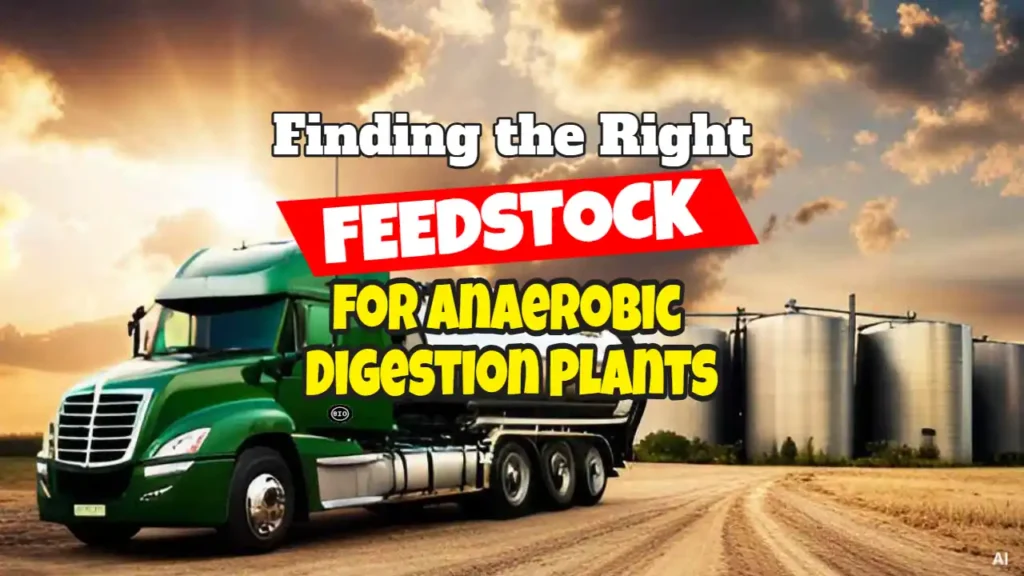
The Reliance on Specially Grown Crops
While farm wastes and non-crop feedstock were initially considered as part of the feedstock mix, operators have leaned more towards specially grown crops such as forage maize, hybrid rye, and energy beet.
The preference for these crops stems from their consistent performance and supply, as they are:
- under the control of the farm business,
- ensuring bankable sources of feedstock when
- other options are uncertain in terms of availability and cost.
The positive news about finding the right feedstock is that well-designed and skillfully operated AD plants tend to exceed their original physical and financial targets. Organizations like the National Farmers Union (NFU) recognize AD as a crucial component in achieving carbon neutrality in UK agriculture by 2040.
December 2023 News: Large Injection of Organic Waste Feedstock Anticipated in 2026 due to the Simpler Waste Collection Scheme
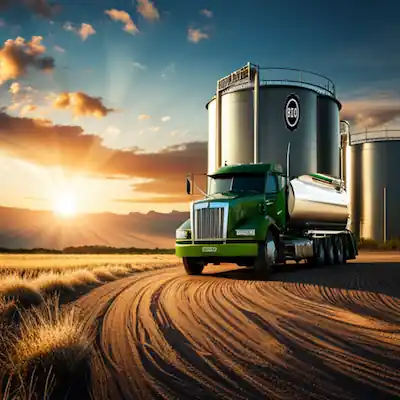 The Simpler Waste Collection Initiative mandated by the UK government represents a significant opportunity to obtain a large and reliable additional source of source-separated organic waste. This initiative will require English local authorities to implement weekly source-separated food waste collections by 2026.
The Simpler Waste Collection Initiative mandated by the UK government represents a significant opportunity to obtain a large and reliable additional source of source-separated organic waste. This initiative will require English local authorities to implement weekly source-separated food waste collections by 2026.
The primary improvements that Defra's “Simpler Recycling” will bring about are: Every local authority in England will collect seven recyclable trash streams from households in their area (including apartments). These will include food waste, glass recycling, garden trash, metal, plastic, paper, and card.
Only about 1/3 of English local authorities currently provide these collections, so the rise in the food waste tonnage which may potentially be fed to anaerobic digesters will be substantial.
This mandate for finding the right feedstock will have several key benefits:
- Increased Volume: With weekly collections, the volume of source-separated food waste collected is expected to rise substantially. Households will be encouraged to separate their food waste, leading to an additional reliable and substantial source of organic material for anaerobic digestion (AD) plants.
- Consistency: Weekly collections ensure a steady and predictable supply of source-separated food waste throughout the year. This consistency is crucial for AD facilities that rely on a continuous and reliable feedstock source.
- Reduced Contamination: Dedicated food waste collections promote cleaner and less contaminated organic material. This, in turn, improves the efficiency of AD processes and enhances biogas production.
Note on Contamination Avoidance: Using equipment to prevent plastic and grit buildup over a long time is vital in any digester but even more so for all food waste digestion projects. By using 3rd Generation depackaging and sediment removal from the organic pulp. Contamination-free organic soup can be easily achieved by installing the Drycake Twister Depackager and Separator, with the possible addition of the Seditank for residual removal of remaining microplastic, grit and silt.
In summary, the UK government's mandate for weekly source-separated food waste collections represents a significant opportunity to bolster the availability of organic waste for AD plants. This move aligns with sustainability objectives, reduces waste, and offers a consistent and reliable feedstock source that can benefit both the environment and the renewable energy industry.

The Food and Fuel Debate
The prevalence of forage maize as a feedstock source has sparked some criticism, primarily related to concerns about competition for land and the environmental impact of late-harvested crops. However, these concerns have been partially addressed by the compulsory auditing requirements, including the Annual Sustainability Audit Report, imposed on large AD plants.
Moreover, recent changes in the Non-Domestic Renewable Heat Incentive (NDRHI) necessitate that applicants generate at least 50% of biomethane from waste or residue feedstocks to qualify for payments. The government is contemplating further increases in this requirement under the Green Gas Support Scheme (GGSS) to discourage the use of purpose-grown energy crops, thereby promoting the utilization of waste feedstock.

Exploring New Income Sources for Farmers Post-Brexit
The Need for New Farming Income Sources Post-Brexit
With reductions in farmers' basic payment scheme payments underway in England, large farm businesses face the potential loss of up to two-thirds of their EU Common Agricultural Policy (COP) payments by 2024.
This has prompted many agricultural businesses to seek viable alternatives to unsubsidized commodity crop production. While most may lack the capital or risk appetite for large-scale AD investments, they are increasingly open to collaborating with developers or operators to “host” AD plants and supply feedstock while managing digestate disposal. This arrangement offers additional revenue without the burden of substantial upfront expenditure.
Enhancing the Role of Waste and Residue Feedstocks
As part of the NDRHI (Non-Domestic Renewable Heat Incentive (RHI)) qualification criteria, applicants must now generate a minimum of 50% of biomethane from waste or residue feedstocks to receive payments. This requirement reflects the growing emphasis on the utilization of waste and residue feedstocks to promote sustainability in AD operations.
Regional Insights into UK Feedstock Mix
Scotland: Leading in Feedstock Consumption
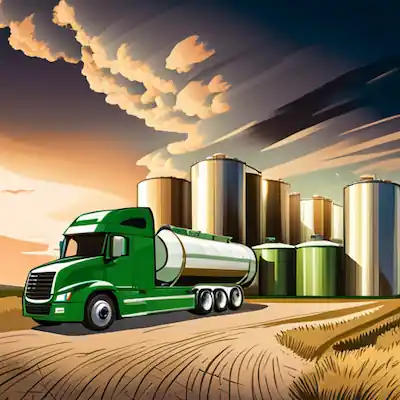 When it comes to finding the right feedstock in Scotland boasts the largest volume of feedstock consumption through AD among all UK regions. Brewers supply significant quantities of waste and residues from their industry as feedstock. The proximity of these plants to the existing gas network further supports their growth.
When it comes to finding the right feedstock in Scotland boasts the largest volume of feedstock consumption through AD among all UK regions. Brewers supply significant quantities of waste and residues from their industry as feedstock. The proximity of these plants to the existing gas network further supports their growth.
South West: A Hub of Biogas Production
The South West region of England stands out as a biogas production hub with numerous plants distributed across the region. These plants utilize a diverse mix of feedstocks, including source-separated food waste.
North East: A Focus on Food Waste
Food waste accounts for nearly two-thirds of the feedstock used in the North East. While there are relatively few plants in existence, they are strategically located near the Tees Estuary, where gas infrastructure is well-developed.
South East: Energy-Dense Crops
The South East region hosts a comparable number of plants to Yorkshire and the Humber, but it processes a relatively smaller volume of feedstock. This can be attributed to the use of energy-dense crops, which may result in smaller plants.
North West: Food Waste Dominance

In the North West, all feedstock is derived from food waste or waste products linked to food processing, reflecting the region's traditional farming focus on non-arable production. Plans for a hydrogen hub at Ellesmere Port may further develop the region's gas infrastructure.
Yorkshire and the Humber: Balanced Feedstock Mix
Yorkshire and the Humber region processes the third-highest volume of feedstock in the UK, with a well-balanced feedstock mix.
East Midlands: Energy Crops Abound
In the East Midlands, energy crops provide 90% of the entire feedstock supply. The region's population centres offer opportunities for AD expansion, supported by well-developed gas infrastructure.
Wales: Source-Separated Food Waste
Wales has embraced source-separated food waste in AD, but relatively few have gas grid injection likely due to its comparatively limited gas infrastructure, with the existing plants mostly concentrated in South Wales.
West Midlands: Crop Waste Focus
The West Midlands stands out for its extensive use of crop waste feedstocks compared to other regions. Overall, it aligns well with the UK's feedstock mix.
East of England: High Energy Crop Use
The suitability of the East of England for arable farming results in a significant proportion of energy crop feedstock usage, coupled with a large number of AD plants and high feedstock volumes.
London: Urban AD Success
London's presence in the AD landscape may come as a surprise, but the city benefits from substantial food waste streams, ample gas infrastructure, and a strong demand for energy, creating an ideal environment for AD operations.
Sources: This article was inspired by REA, ADBA, and Savills Research.
Concluding this Article on Finding Feedstock for Anaerobic Digestion Plants
In conclusion, securing a reliable and sustainable feedstock supply is essential to obtain the financial backing to get AD plants started in the first place, and once built it remains essential for the success of anaerobic digestion plants.
While energy crops remain dominant, the emphasis on waste and residue feedstocks is growing, driven by sustainability goals and regulatory changes.
Regional variations in feedstock sources highlight the importance of tailored strategies for each location, ultimately contributing to the growth of this vital renewable energy sector.

